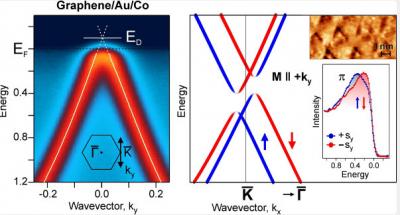Scientists from St. Petersburg University and Tomsk University in Russia, along with teams at the Max Planck Institute in Germany and University of the Basque Country, Spain, have modified graphene in such a way that it has taken the properties of cobalt and gold: magnetism and spinorbit interaction. This advance can greatly benefit quantum computers.

The graphene was (for the first time, according to the researchers) modified to adopt such fundamental properties as magnetism and spin-orbit interaction. The spin of an electron is a magnet induced by the spin of the electron around its axis. It also orbits the nucleus to produce electric current and therefore a magnetic field. The interaction between the magnet and magnetic field is a spin-orbit interaction. Unlike in gold, the spin-orbit interaction in graphene is extremely small. The interaction between graphene and gold increase spin-orbit interaction in graphene, while interaction between graphene and cobalt induces magnetism, the team explained.
The researchers are planning to study graphene to use it in spintronics that is the study of the intrinsic spin of the electron and its associated magnetic moment, in addition to its fundamental electronic charge, in solid-state devices. Nanoelectronics, or spin-orbitonics, is at the forefront of the fundamental and applied science globally. There are new memory elements, logical elements, neuromorphic devices. They are driven by pure spin current, that is a flow of spins without accompanying a flow of electrical charges. It makes the SPbU’s study especially valuable as it opens up new horizons in using new properties of graphene in last generation of the the spin-orbit devices to increase their efficiency and effectiveness.